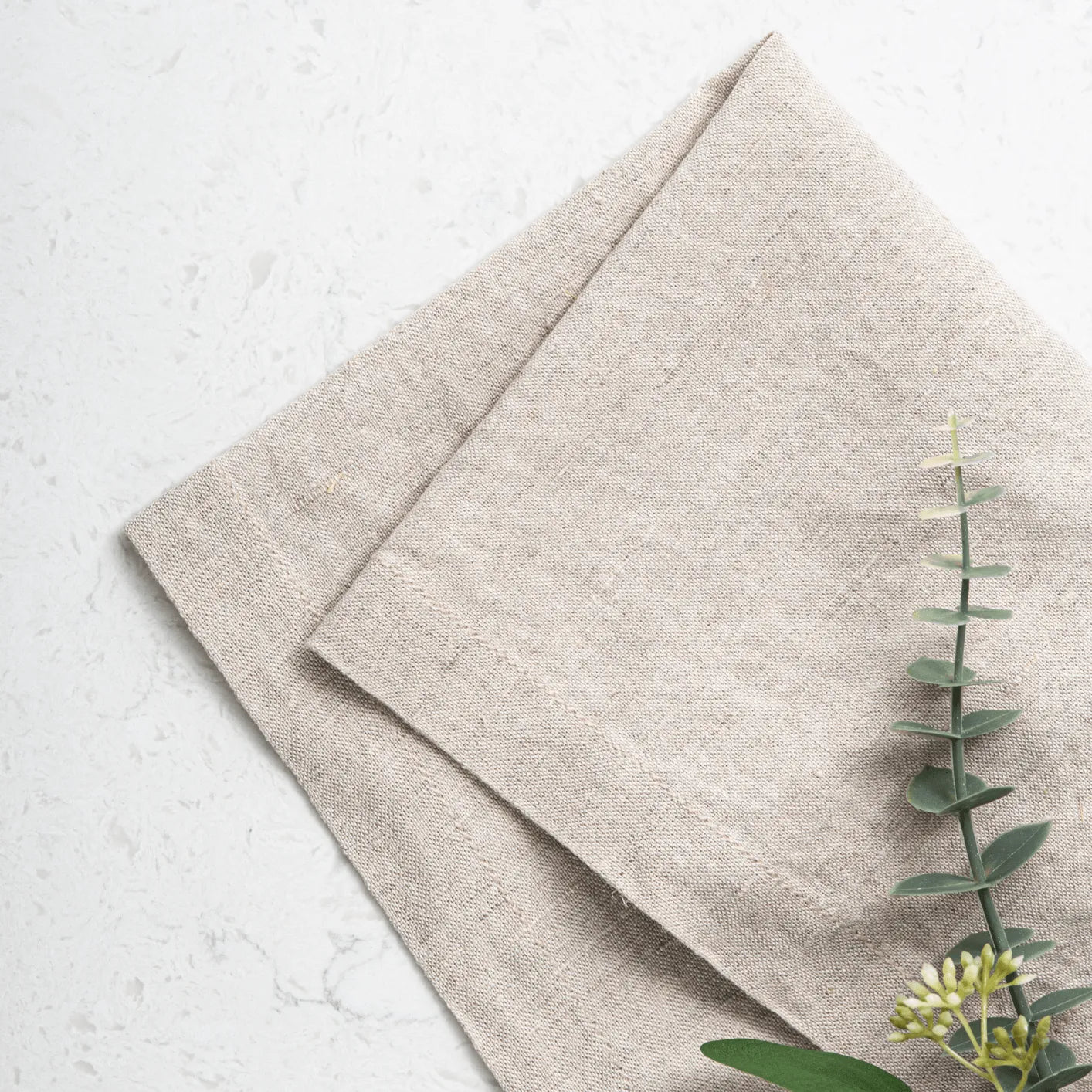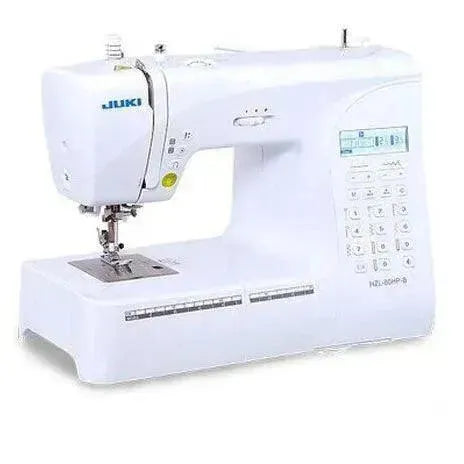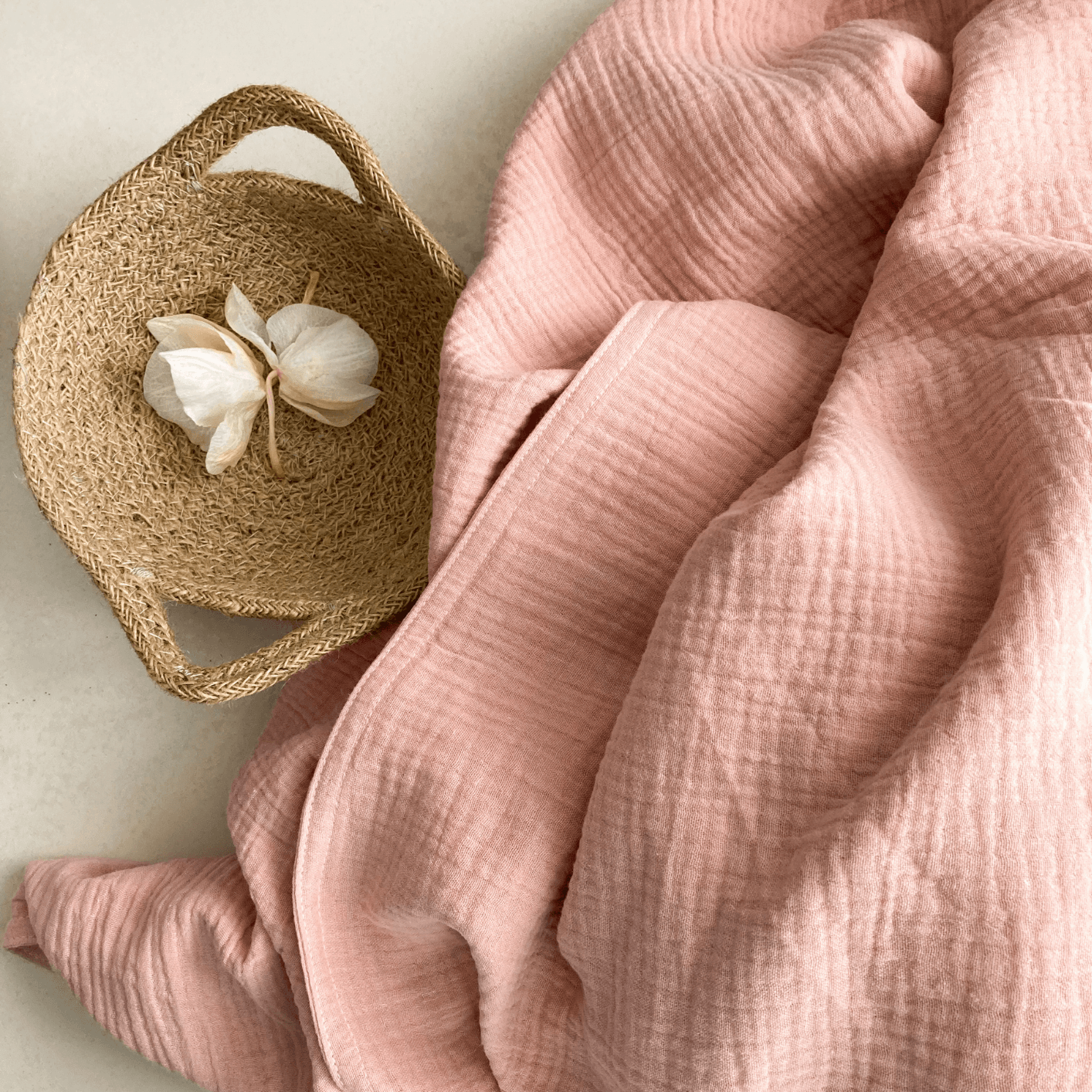table of contents:
- 1. What exactly is linen?
- 2. The fascinating history of linen: from Antiquity to the present day
- 3. The linen manufacturing process: From plant to natural fiber
- 4. The exceptional properties of linen: elegance, durability and comfort
- 4.1 Candy
- 4.2 Lightness
- 4.3 Breathability
- 4.4 Moisture absorption
- 4.5 Resistance
- 4.6 Hypo-allergenic
- 4.7 Ecological
- 4.8 Aesthetic
- 4.9 Easy to maintain
- 5. Uses of linen
Immerse yourself in the world of linen, the natural fabric that revolutionizes your lifestyle . Discover the unique qualities of this fiber, its lasting impact and find inspiration to integrate linen into your wardrobe and your daily life.
What exactly is linen?
Linen is a natural fiber of plant origin widely appreciated for its versatility and remarkable qualities. Used in various industries, linen is prized for its durability, breathability and ability to bring a touch of natural elegance to different products. Whether in fashion, home linens or interior decoration, linen has won its place by offering a unique blend of style, comfort and durability. In this blog, we will explore the benefits of linen and the reasons why it has become an essential fabric that is revolutionizing our lifestyle.

The fascinating history of linen: from Antiquity to the present day
Flax is one of the oldest plants cultivated by man. Its origins date back to around 10,000 BC. BC, where it was cultivated in Mesopotamia (region corresponding to current Iraq and Syria). The ancient Egyptians were particularly known for their cultivation and use of linen.
Egypt was a major center of linen production and use. The Egyptians used linen to make clothing, sheets, boat sails, ropes, and even mummies wrapped in linen bandages. Linen was considered a precious fiber, symbolizing purity and prosperity.

Over time, flax cultivation spread across Europe. The Romans adopted the use of linen and introduced it to other areas of their empire. Flax became an important crop in countries such as France, Belgium, the Netherlands and Ireland.
During the Middle Ages and the Renaissance, linen experienced a period of considerable growth. Weavers' guilds formed, and linen became a popular fabric for clothing, linens, and home accessories. Fine linen fabrics were highly sought after, and regions such as Flanders and Ireland became renowned for their production of high quality linen.

In the 19th century, industrialization led to the emergence of new textile fibers, such as cotton and nylon, which began to compete with linen. Demand for linen declined, but it remained a fiber valued for its unique properties.
Today, flax continues to be grown and used around the world. Its popularity has rebounded due to its appeal as a natural, sustainable and environmentally friendly fiber. Linen is used in fashion, linens, interior design and even industrial applications such as composites and building materials. Its rich history and versatility make it a popular fabric that has stood the test of time.

The linen manufacturing process: From plant to natural fiber
Flax manufacturing involves several steps, from the time of growing the plant to obtaining the fiber used in various applications.
Flax is a plant grown in regions with a temperate climate. Flaxseed is sown in well-prepared fields, usually in spring. The plant grows and develops for approximately 100 days before reaching maturity.

After harvest, bales of flax are spread on the ground in fields or shallow ponds for a process called retting. This allows natural elements, such as rain, dew and sun, to break down the pectins that connect the fibers to the plant's stem. Retting can last from a few days to a few weeks, depending on environmental conditions. Once retting is complete, the flax stalks are bundled together and put through a process called scalding. This involves passing the stems through machines that expose them to controlled heat to help separate the fibers from the woody part of the plant.

After scalding, the flax fibers are carefully combed to remove impurities and obtain long, fine fibers. These fibers are then spun to create linen threads, which can be used in making textiles. Linen threads are then used to create linen fabrics. They can be woven on looms to produce textiles such as sheets, curtains, clothing, etc. Alternatively, linen yarns can be knitted to create linen knitted items.
Linen fabrics may undergo additional finishing processes, such as dyeing, to achieve the desired characteristics and finishes. This is how flax, from cultivated plant to processed fiber, is manufactured for use in a wide range of textile products.

The exceptional properties of linen: elegance, durability and comfort
Linen, this natural fiber of plant origin, is increasingly popular in the world of fashion and interior decoration. The remarkable properties of linen make it an essential fabric for those looking for style, comfort and durability.
Candy
Thanks to its fine and smooth texture, linen offers a feeling of comfort and well-being to the touch. Whether for elegant clothing or cozy household linen, let yourself be enveloped by the natural delicacy of linen, a pure pleasure for the senses.
Lightness
Linen's naturally breathable structure allows air to circulate freely, providing a cool, light feeling, ideal for hot days. Whether for summer clothing or household items, opt for the natural lightness of linen and experience unparalleled comfort.
Breathability
Linen is a naturally breathable fabric, meaning it allows air to flow easily through the fibers. This helps regulate body temperature by allowing heat and moisture to escape, making it an ideal choice for summer clothing or bedding items.
Moisture absorption
Linen has the ability to quickly absorb and release moisture. It can absorb up to 20% of its weight in water while maintaining a feeling of freshness and comfort. This property makes it a pleasant fabric to wear in hot and humid weather.
Resistance
Linen is a naturally strong and durable fabric. It is stronger than cotton and has great longevity, making it a lasting investment in your wardrobe or linens.

Hypo-allergenic
Linen is often recommended for people with skin sensitivities or allergies because it is hypoallergenic and less irritating to the skin. It is also antibacterial and naturally resists mold and dust mites.
Ecological
Linen is a natural, renewable and biodegradable fiber. Its cultivation requires less water and chemicals than other textile fiber crops. Additionally, all parts of the flax plant can be used, reducing waste.
Aesthetic
Linen has a natural, elegant look with a slight crinkle effect, giving it a relaxed, rustic charm. It is available in a range of colors and textures, offering many possibilities for design and artistic expression.
Easy to maintain
Linen is easy to maintain. It can be machine washed and it even becomes softer and more supple with each wash. Its crinkled appearance gives it a natural charm, allowing you to enjoy a casual look without having to iron every time. Simplify your daily life with linen, a practical and aesthetic choice.

Uses of linen
Linen is ideal for making light and comfortable clothing. You can sew summer dresses, blouses, skirts, pants and shorts from linen for a casual and elegant look. Use linen to create fashion accessories such as handbags, clutches, hats and belts. Linen brings a natural and refined touch to these accessories. Linen is also suitable for sewing baby items such as bibs, swaddles, lightweight blankets and soft, breathable clothing. Linen is perfect for making spacious and durable beach bags. You can store your essentials there for a sunny day at the beach.
Linen is widely used for making household linens. You can sew linen sheets, pillowcases, tablecloths, napkins and curtains for a chic and timeless atmosphere in your interior. Transform the look of your cushions by sewing linen covers. Linen slipcovers add a touch of texture and elegance to your decor. Sew linen aprons for cooking or gardening. Linen is strong and durable, making it a practical choice for projects requiring good protection.
Don’t hesitate to give free rein to your creativity and experiment with linen in your sewing projects. Its natural beauty and functional qualities make it a fantastic choice for a variety of projects.
Linen is much more than just a fashionable fabric. Its remarkable properties make it a wise choice for those seeking elegance, durability and comfort. Whether for clothing, linens or accessories, linen offers a unique combination of characteristics that make it a versatile and popular fabric.
We offer several simple tutorials on our blog if you are new to sewing, also find us on Facebook , Instagram and TikTok !












































Leave a comment
All comments are moderated before being published.
This site is protected by hCaptcha and the hCaptcha Privacy Policy and Terms of Service apply.